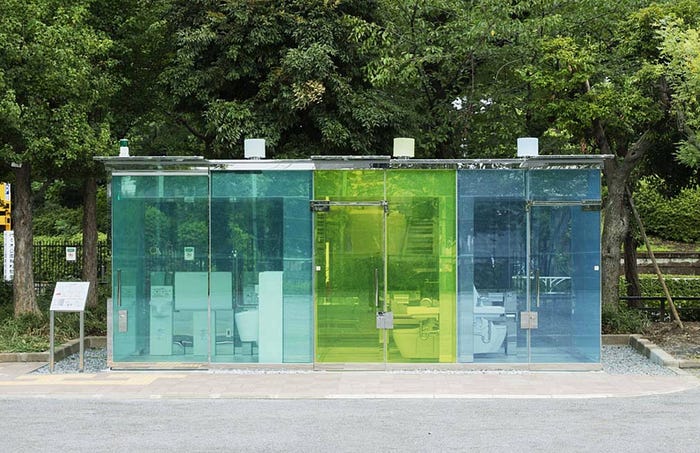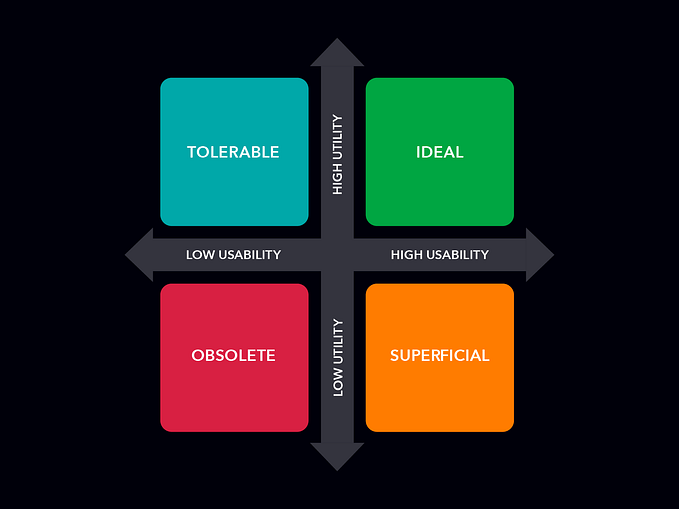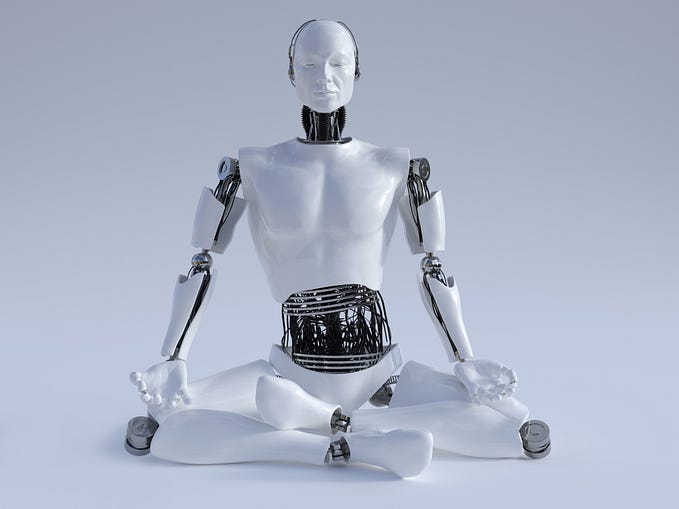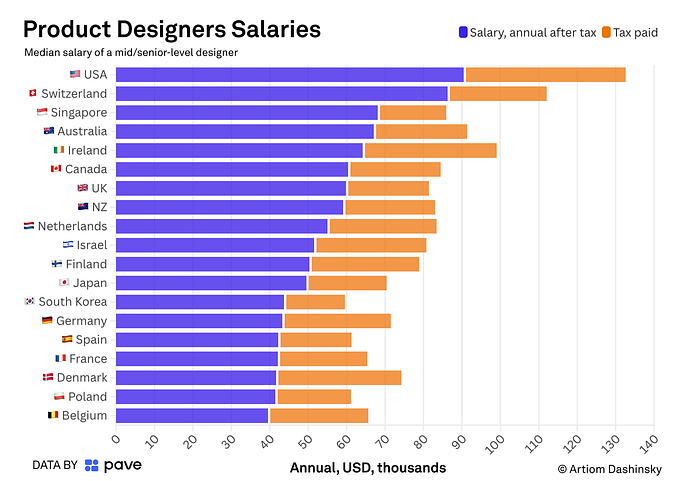Flushing mistrust in tech
What can Japanese public toilets teach us about User Experience and trust in technology?

If you’ve ever been to East London’s bustling Broadway Market, you might have seen the outdoor men’s ‘bathroom’ next to London Fields green space. Each time I pass this al fresco “delight,” I try everything to avoid making awkward eye contact with a tipsy hipster using the facilities.
While everything important is hidden from sight — and I do get that when nature calls, she’s in charge — I also wonder how anyone can feel at ease doing what they’ve got to do out in the open like that. After living in Paris, I know outdoor conveniences are pretty passé in France, but there was me thinking British people are pretty self-conscious. Clearly not.
Another nation I’ve always thought to be similarly self-conscious — if not more so — is Japan. So, as you can imagine, I was astonished to read that Tokyo recently introduced transparent public toilets. However, on further reading, there’s more to these than meets the eye, and they actually offer more privacy than the open-air affair at Broadway Market.
In Japan, there is an extreme phobia of using public loos, even though they’re generally cleaner there than anywhere else in the world. For that reason, they often go underused.
This year, in the hope of changing that, not-for-profit Nippon Foundation teamed up with local government to launch The Tokyo Toilet Project. To stop people looking at these facilities as “dark, dirty, smelly, and scary,” they introduced a number of user-friendly, architect-designed public toilets. And a couple of them, the brainchildren of Pritzker prize-winning architect Shigeru Ban, are transparent!

How is all this cloakroom chat connected to User Experience and trust in tech? Well, I guess the latter may be more obvious…
User Experience
To start with, I’m reminded of my first great love: User Experience. These cutting-edge see-through designs will improve the UX of public loos (and the spaces they’re in) for a few key reasons:
- They’re inclusive. NF says they’ve made the facilities “accessible for everyone regardless of gender, age, or disability…as a way of moving toward the realization of a society that embraces diversity.”
- They’ll be maintained on a regular basis “so people will feel comfortable using these public toilets and to foster a spirit of hospitality for the next person.” The transparent glass will allow potential users to have a peek inside to check cleanliness before entering.
- They’re safe. On top of the practicality element, the transparent glass will also permit people to make sure no potential danger awaits within.
Of course though — as you will have been asking — no, the toilets are not permanently transparent. Can you imagine? On entry, the door locks and then smart glass technology transforms the walls from clear to opaque, providing users complete privacy. A far cry from the facilities at London’s Broadway Market, wouldn’t you agree?

Trust in tech
The UX angle aside, does this concept sound familiar? Transparency improving public confidence in something that we don’t always trust? You’ve got it: technology!
Because our lives have become increasingly tech-enabled, trust in technology and in technology companies is now more important than ever. Many tech firms have found themselves in deep water by breaching public trust, and while some of the bigger names make it to the shallows relatively unscathed, others sink fast.
Yes, tech firms must work hard to build public trust in a landscape where consumers sometimes perceive recent innovations in the same way as the Japanese view public toilets — as “dark…and scary.” Social media sites with 75-page terms-and-conditions no one reads, which covertly take your conversations into someone else’s ownership, aren’t a great way to build trust. Be that as it may, we’re all learning and there’s no silver bullet in this respect. Some strategies will work, whereas others won’t. As the Nippon Foundation are discovering, transparency is a great starting point.
I’m not suggesting that we always need full transparency, with every detail of business thrown out into the public domain — in much the same way as there’s no need for Shigeru Ban’s public loos to remain see-through 24/7. In both contexts, this could do more harm than good.
That said, we have seen examples of full transparency before. In a 2015 interview, Leo Widrich, co-founder of social media scheduling app Buffer, spoke about the firm behaving in a different way to others by publishing absolutely everything for the public to see. Every snippet Buffer releases, he argues, helps build trust in all aspects of its product.
On the whole though, the level of transparency required of each tech firm does — and should — differ. It does make you think, and I wonder if a company that gave you control of your personal data could flourish? Would people switch to new platforms that offered them control over their conversations and data, and ultimately control over monetising their own engagement? There are start-ups out there hoping for that very thing. For example, Sir Tim Berners Lee is backing Inrupt, one of the new wave of companies placing transparency at the core of its business model. In any case, I don’t think we’ll be calling for the walls of Big Tech’s spaces to be crafted from smart glass anytime soon.
Sure, trust can be achieved in other ways, like making promises and following through on them. For instance, if an e-commerce website guarantees good UX, then you can bet your bottom cryptocoin that trust will go right down the pan if a user is forced to hunt for a call-to-action (CTA) just to make a purchase.
But reliability isn’t enough on its own. What consumers really want is to know that a company shares their values, and that can’t ever be truly clear in the absence of honesty and openness.
Sadly, honesty and openness can be elusive creatures in the tech world, but because we’re increasingly relying on a wider range of devices in every area of our lives, it’ll be interesting — and essential — to watch what happens to transparency in the coming years.
…
If you read this blog from last year, where I compare London’s sewers to information architecture, you’d be forgiven for now thinking I’m preoccupied with solving all the world’s problems with toilet analogies. It goes without saying that I’m not, yet isn’t it fascinating that we can learn so much from a public bathroom?











